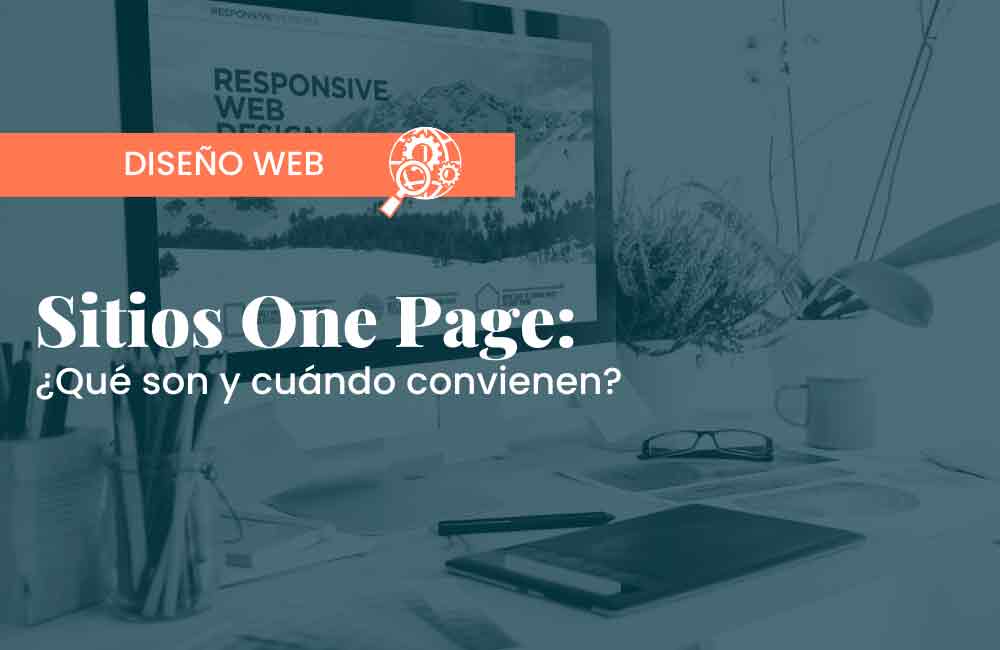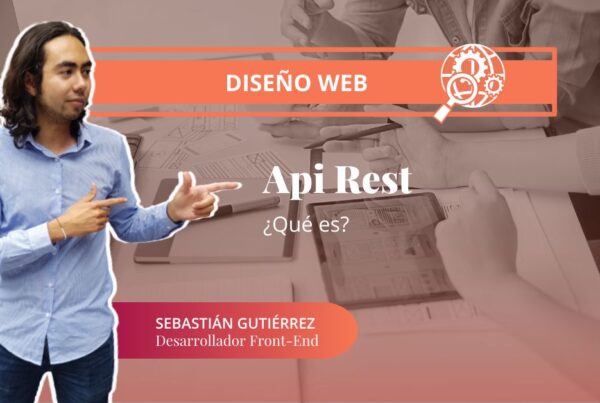One page or “One page websites” refers to a type of website design where all the information is found on a single page. That is, instead of having a traditional navigation structure with multiple different pages, a website we’re referring to presents all the information on one page, either through scroll or using different sections.
Characteristics of One Page Websites
These sites are characterized by being minimalist and easy to navigate since all the information is accessible in one place. They often use a parallax design, where the background and content move at different speeds to create an attractive visual effect.
One page websites are ideal for businesses with a limited offering of products or services, or for those who want to present their information in a concise and easy-to-understand manner. Additionally, they are ideal for mobile devices, as they adapt well to smaller screens.
Regarding search engine optimization (SEO), it is important to mention that these websites can present certain challenges because the information is on a single page, and it is less likely that multiple pages will be indexed by search engines. However, specific techniques can be employed to optimize the content and improve search engine rankings.
When to Choose a One Page Website?

Although not the most common option, a one page website can be an excellent choice for certain types of businesses or projects. Below are some situations where choosing a one page might be the best option:
- Businesses with a limited offering: If your business offers only a few products or services, it could be the best option. Without the need to create multiple pages for different services or products, you can focus on presenting your offer clearly and concisely.
- Projects with a simple message: If your project has a simple message that you want to convey clearly and directly, a one page website can be a great option. Having all the information on one page allows the user to understand the message quickly and easily.
- Promotional websites: If you are creating a site to promote an event or special offer, it’s the best option. Having all the information on a single page allows the user to get all the relevant details quickly and easily.
- Mobile-friendly websites: The type of site we’re talking about adapts well to mobile devices since the information is presented on a single page and does not require the user to navigate through multiple pages. This is especially important if your website is mostly visited by mobile users.
- Portfolio websites: If you are creating a website to showcase your portfolio of works, a one page website can be a great option. Having all the information on a single page allows the user to easily navigate through your portfolio and see all the relevant works.
What Should a One Page Have?
Although these types of websites tend to be minimalist, there are certain essential elements that must be included. These should be included to ensure that it is easy to navigate and effective in communicating your message. Below are some essential elements a one page should have:
- Navigation: Even though all the information is on a single page, it is crucial to include a way to navigate through it. This can be via a navigation menu or a scroll bar.
- Clear and concise content: The content must be clear and concise so the user can understand the message quickly and easily. It’s essential to avoid information overload and focus on presenting only the essentials.
- Call to action: A call to action is essential for any website, as its goal is to persuade the user to take action, such as buying a product or service, subscribing to a newsletter, or contacting the business.
- Attractive design: Design is essential for any website, and a one page is no exception. An attractive design will help grab the user’s attention and keep their interest in the website.
- Search engine optimization: It’s important to take steps to improve the website’s ranking in search engines. This includes the use of relevant keywords, creating quality content, and optimizing the website’s structure.
- Responsive design: It is important that the website design is adaptable to different screen sizes so it can be viewed properly on mobile devices.



